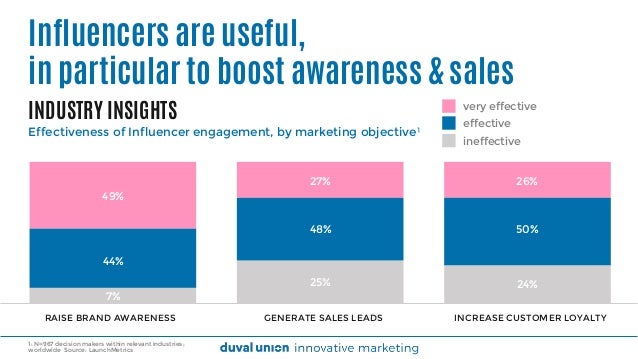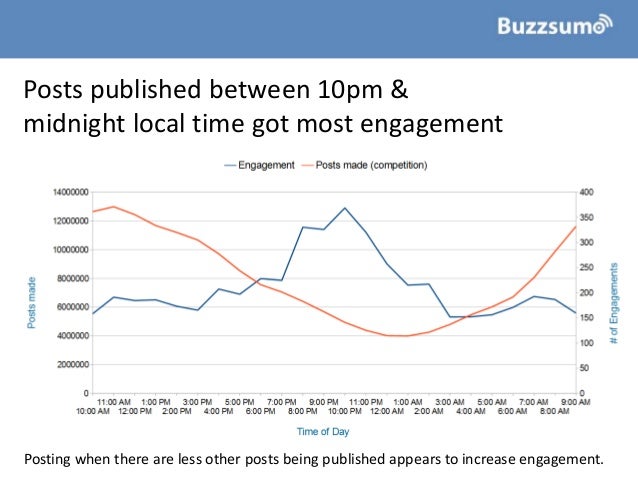Regardless
of how your restaurant website has performed in Google to date, there
are always opportunities to improve your search engine optimization
(SEO) and increase your Google rankings.
Improving your search visibility will drive more hungry customers into your restaurant or place online to-go orders.
Investing
in SEO is a must for restaurants today. You can use locality,
structured data, customer sentiment, and more to your advantage and
boost the rankings for your single or multi-location restaurant chain.
Below are nine quick tips for where to focus your time to boost your website in the search results via SEO.
1. Define Your SEO & Content Strategies
Before jumping into a myriad of tools, platforms, and engagement channels, define your
SEO strategy. This will help greatly narrow your competition and give you a quicker road to driving quality traffic to your website.
Start
by defining the geographic area you want to own (where must of your
customers will come from because they either live or work nearby or are
visiting). This will help shape your SEO and content strategies.
Next,
research what keyword terms and phrases your audience uses through
Google Keyword Planner or a third-party keyword research tool. (For more
on how to do keyword research, read SEJ’s
keyword research guide.)
There
are a few distinct groupings of terms that you want to group and
classify properly that all have different levels of competition.
- High-level restaurant terms: Terms
like “restaurants” and “Kansas City restaurants” are some of the most
generic variations a searcher might use. In the Google Keyword Planner
or other third-party keyword research tools, you can set your geographic
focus to the area you identified and use both the generic term by
itself (“restaurants”) and with the geographic modifier (“Kansas City
restaurants”) as well as other general variations related to what your
restaurant is about.
- Niche-specific terms: The
next level down of terms relates to the specific categories your
restaurant would fall into that might be searched. Examples include
“Mexican restaurants”, “pizza”, “romantic restaurants” and other unique
features. If you’re struggling with what specific categories or wording
you should use, take a look at Google Maps, Yelp, and TripAdvisor and
use their filtering criteria in your area to see the general categories
they utilize.
- Brand terms: Don’t take it for
granted and assume you’ll automatically rise to the top on brand
searches. Know how many people are searching for your restaurant by name
and compare that to the high-level and niche-specific search volume.
You’ll want to ensure your site does enough to outrank the directory and
social sites in your space for your restaurant as the value of people
coming to your site is higher and trackable.
Once you’re
armed with search terms and volume data, you can narrow your focus to
the specific terms that fit your restaurant at high, category-specific,
and brand levels. Covering this spectrum helps you focus on what to
measure and define your content.
2. Dominate in Local Search
Start
by claiming, standardizing data, and optimizing listings for your
restaurant across all of the major and relevant local search properties.
This includes a mix of search engine directories, social media sites,
and industry-specific directory sites.
Moz Local and Yext are two
tools that can help you understand what directories and external data
sources are out there and then you can ensure they are updated.
Accurate
NAP (name, address, phone) data that is consistent across all data
sources is a critical foundational element of local SEO.
Beyond
that, you can then work on optimizing the fields of information like the
business description and business categories to align with your focus
terms identified in your keyword research.
Put your focus on the
directories that matter. Start with Google My Business then branch out
to Yelp, TripAdvisor, Foursquare, CitySearch, various yellow pages, and
other emerging
niche review websites.
All of this will work together to grow your online visibility.
3. Engage with Customers on Social Media
Even though
social media’s direct impact on SEO has long been debated, we know that social media engagement can drive users to your site.
Social
media can be a powerful touchpoint of the customer journey, showcasing
what customers can expect to experience at your restaurant. A strong
social presence often correlates with a strong organic search presence
as content, engagement, and popularity align with the important SEO
pillars of
relevance and authority.
Develop a
social media strategy and
follow through with implementation. Make sure to engage with followers
and reply to inquiries promptly. How you communicate online sets a
perception of your overall customer service and approach.
Find your audience, engage them, and get them to influence others on your behalf.
Ultimately,
through engagement with fans and promoting content on social media that
funnels visitors to your main website, you will see an increase in
visits from social networks. This will then correlate with the benefits
from the rest of your SEO efforts.
4. Encourage Reviews & Testimonials
It’s nearly impossible to do a search for a restaurant and not see
review and rating scores in the search results. That’s because people click on higher star ratings.
Reviews
are often considered as part of a social media strategy and are an
engagement tactic, but have a broader impact on traffic to your site
through search results pages as well.
Through the use of
structured data markup, you can have your star ratings appear in search
results and provide another compelling reason for a user to click to
your site versus your competitor’s site.
If you have online
ratings that don’t reflect the quality of your restaurant, come up with a
review strategy now to get as many reviews as possible to help bring up
your score prior to implementing the code that will pull the ratings
into the SERPs.
A higher star rating likely means a higher click-through rate to your site – and more foot traffic.
5. Create Unique Content
If
you have a single location, your job is a lot easier than the
multi-location local or national chain. However, you have to stand out
from the competition by ensuring you have enough unique content on your
website.
Having a wealth of engaging and helpful content on your
site will serve you well if it is valuable to your prospects and
customers. Building a strong brand will translate to better rankings,
higher brand recall, and greater brand affinity.
Keep in mind that content doesn’t all have to be copy and you have an opportunity to feature
unique content
through the ways you present your menus, through video, photography,
and graphics. The search engines are focused on context and not just
wording on your site. By identifying and regularly generating new
content, you also can keep the pipeline full of engaging material and
ways to stand out from your competition.
For example, if you have a niche restaurant, embrace that and set yourself apart from the generic chain down the street.
Share
information about the founders, the culture, and most importantly – the
product. Give details about your menu including sourcing of
ingredients, how you developed recipes, and the compelling reason your
chicken marsala is the best in town.
6. Consider Content Localization
Again,
single location restaurants have an easier road here. Based on
decisions you’ve made about your market area, make sure you provide
enough cues and context to users and the search engines as to where your
restaurant is and what area it serves.
Sometimes the search
engines and out of town visitors don’t fully understand the unofficial
names of neighborhoods and areas. By providing content that is tied into
the community and doesn’t simply assume that everyone knows where
you’re located, you can help everyone out.
A way that I helped a
100-location chain tackle this in the past was through starting small
with a single paragraph for each location that was written in a way that
was tailored to the store, local history, neighborhood, and community
engagement. From there we were able to then find other areas to scale
after we took that quick initial step and it worked well to
differentiate stores from each other.
7. Apply Basic On-Page SEO Best Practices
Without going into the details of all
on-page and indexing optimization techniques,
I want to encourage you to not skip or ignore the best practices of
on-page SEO. You need indexing to ensure the search engines know you
exist and on-page to ensure proper classification of your content. You
can spend a lot of time on a full SEO strategy, but I recommend putting
the rest aside and starting with these two areas.
To ensure your site is indexed properly now and into the future, check your
robots.txt and
XML sitemap and set up Google Search Console to look for errors.
When it comes to on-page, ensure that you have unique and keyword-specific page
URLs,
title tags,
meta description tags,
headings, page copy, and image alt attributes. This sounds like a lot,
but start with your most important pages like your home, menu, about and
contact pages and go from there as time permits.
8. Think Mobile
Mobile
accounts for a high percentage of visits to restaurant websites. July
benchmark data from Google Analytics shows nearly two-thirds of all
traffic is from mobile or tablet devices.
Additionally, the search
engines have been moving toward a mobile-first experience for users
including a rankings bonus for having a mobile-friendly website and the
eventual
rollout of the mobile-first index.
Hopefully, you’ve already created a
responsive website.
But that’s just the beginning when it comes to mobile. It’s also critical to think about
page load speed, proper rendering, and providing a
great mobile user experience.
9. Implement Schema “Restaurants” Markup
Another
area where we can build context for the search engines and gain
exposure to more users in the search results is by using
structured data.
In the restaurant industry, implementing the
Schema.org library for restaurants is a must.
This task requires a developer or a website platform or content management system with the right plugins or built-in options.
Summary
If
you want to make sure your restaurant is full day in and day out,
people need to be able to find you online. Once they find you, you need
to quickly win them over with a great website experience and drive them
to your location. These nine tips will help you accomplish both of those
goals.
Once those customers get to the restaurant, it’s all up to
the staff. Remember, no amount of SEO can save a restaurant that
consistently leaves a bad taste in the mouths of its customers.
Reference:
https://www.searchenginejournal.com/restaurant-seo-tips/208644/
 Influencers
have a strong following on social media because they capture their
audience's interest; they have established a relationship with them.
Maybe they're the same age as their audience, have the same interests,
or have undergone the same life experiences. This strong relationship
with their followers means influencers will only work with a company or
brand that they and their audience believe in. For example, an
influencer known for her quirky and affordable style of clothes won't
suddenly start campaigning for a high-end shoe brand.
Influencers
have a strong following on social media because they capture their
audience's interest; they have established a relationship with them.
Maybe they're the same age as their audience, have the same interests,
or have undergone the same life experiences. This strong relationship
with their followers means influencers will only work with a company or
brand that they and their audience believe in. For example, an
influencer known for her quirky and affordable style of clothes won't
suddenly start campaigning for a high-end shoe brand.

















